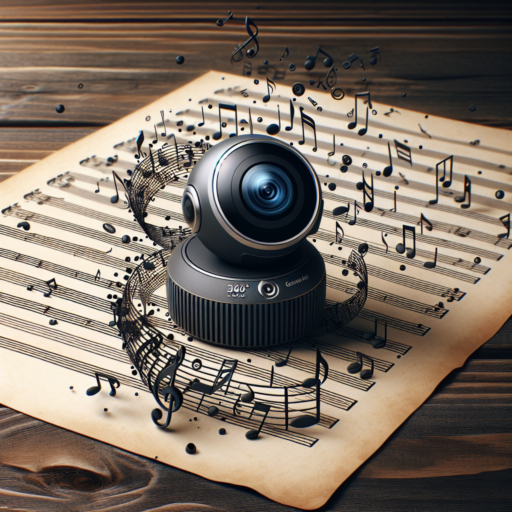No se han encontrado productos.
What is the best light for GoPro diving?
When embarking on an underwater adventure with your GoPro, the right lighting can radically transform your footage from mundane to mesmerizing. The best light for GoPro diving is one that not only complements the natural beauty of the underwater world but also addresses the challenges posed by limited sunlight beneath the waves.
Key Features to Look For
When searching for the ideal dive light, several key features stand out. Firstly, brightness is paramount. A light offering a wide range of brightness levels (measured in lumens) can adapt to various depths and water conditions. Secondly, consider the beam angle. A wider beam angle covers more area, which is crucial for capturing expansive underwater landscapes. Lastly, battery life should not be overlooked. Longer battery life ensures that your light will last through your dives, so you won’t miss any captivating scenes due to a dead light.
The Role of Color Temperature
The color temperature of your dive light also plays a crucial role in enhancing your GoPro footage. Lights with a color temperature around 5000 to 6500 Kelvin mimic natural sunlight and help in restoring the true colors of marine life and corals that are often lost at depth. This feature is pivotal in ensuring your underwater videos and photos are vibrant and true to life.
In the realm of GoPro diving, choosing the right light can be the difference between capturing a hidden underwater world in all its glory or missing out on the wonders lurking beneath the surface. By focusing on these critical attributes—brightness, beam angle, battery life, and color temperature—you can select a dive light that truly enhances your underwater filming experience.
Can I use GoPro for scuba diving?
Absolutely, GoPro cameras are a popular choice among scuba divers due to their compact size, robust build, and high-quality video capabilities. When considering using a GoPro for scuba diving, it’s essential to prepare adequately and be aware of the specific challenges and opportunities this unique environment presents.
Choosing the Right GoPro Model
Not all GoPro cameras are created equal when it comes to underwater use. Certain models, like the GoPro Hero9 Black, are notably more suited for scuba diving owing to their improved waterproof depth rating and advanced stabilization features. It’s crucial to select a model that can withstand the depth of your dives without requiring an additional housing case, although for deeper dives, extra housing is highly recommended to protect your investment.
Understanding GoPro Accessories for Scuba Diving
Accessories can significantly enhance the performance of your GoPro under water. A waterproof case can extend the depth rating of your GoPro, making it safe for deeper dives. Additionally, using filters can help counteract the blue or green tint that often accompanies underwater footage, bringing colors back to life. Lights are another essential accessory for diving in murky conditions or at depths where sunlight doesn’t penetrate well.
Mastering the art of using a GoPro while scuba diving can take time, but it’s well worth the effort for the stunning underwater footage you can capture. With the right preparation and accessories, your GoPro can become an invaluable tool for documenting the mesmerizing beauty of the underwater world.
What is the best GoPro setting for scuba diving?
When embarking on an underwater adventure, capturing the vivid world below the surface is essential, and selecting the best GoPro setting for scuba diving can make all the difference. The optimal settings can vary depending on the clarity of the water, depth, and lighting conditions. However, a few general guidelines can help ensure you come back with stunning, clear footage of your dive.
Optimal Resolution and Frame Rate
For scuba diving, shooting in 4K resolution is highly recommended. The high resolution ensures that the smallest details are captured, from the texture of coral to the vibrant colors of tropical fish. A frame rate of 60fps is ideal as it provides smooth footage that’s perfect for capturing fast-moving scenes underwater. Additionally, higher frame rates are beneficial for creating slow-motion clips without losing quality, allowing you to highlight the majestic slow movement of marine life.
Color Correction: Filters and White Balance
Underwater, colors can significantly shift, especially as you dive deeper. Using a red or magenta filter can help bring back the warmth and contrast lost due to the water’s filtering effect on sunlight. For GoPro cameras, setting the white balance manually is crucial in ensuring that the colors in your footage are true to life. Auto white balance may not always accurately compensate for the varying degrees of light and color absorption underwater.
Incorporating these settings and adjustments can dramatically improve the quality of your scuba diving videos. Remember, each dive site is unique, and experimenting with different settings on your GoPro can help you find the perfect balance for each situation. Be prepared to adjust your settings based on the specific conditions of your dive to ensure you capture the underwater world in all its majesty.
Is the GoPro light waterproof?
When it comes to outdoor and underwater adventures, GoPro cameras are the companions of choice for many enthusiasts. A common accessory that often comes into play is the GoPro light, designed to enhance video and photo quality in low-light conditions. A frequently asked question by users is about its water-resistant capabilities.
GoPro lights are crafted with durability in mind, fitting perfectly with the brand’s line of action cameras. These lights are indeed designed to withstand harsh environments, but when it comes to being waterproof, the answer requires a bit more nuance.
It’s essential to differentiate between waterproof and water-resistant, as these terms significantly impact how you can use the GoPro light underwater. While some models are built to be water-resistant, meaning they can handle splashes and brief submersion, others are explicitly designed with a waterproof rating, allowing for extended underwater activities.




